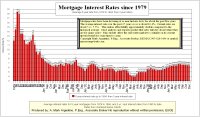
HIGHLIGHTS
Bank of Canada issues revised outlook
U.S. economy proving resilient
Prospect for rate cuts evaporates
This week, the Bank of Canada (BOC) moved to centre stage with an interest rate decision and its Update to October’s Monetary Policy Report (MPR). The fact the Bank left its interest rate setting unchanged on Tuesday came as little surprise. However, the decidedly neutral message that was contained in both the rate-announcement communique and the Update caught some investors off guard, particularly in light of Canada’s sub-par economic growth turnout in recent quarters.
From our perspective, this week’s BOC developments, combined with yet another dose of stronger-than-expected U.S. economic data, have dealt a knock-out punch to any rate-relief hopes in both Canada and the United States. Accordingly, we have removed from our Canadian and U.S. short-term interest rate forecasts the modest 50 basis points in rate cuts that we had factored in during the spring of 2007.
Bank of Canada revises its forecast
In the Update, the BOC acknowledged that the Canadian economy was performing well short of its expectations, with GDP growth estimated to have averaged a mere 1.6% annualized in the second half of 2006, or nearly a full percentage point below its estimate in the October MPR. Such a sluggish pace would normally suggest that slack in Canada’s economy had started to build as 2006 wound down. However, given that the Bank once again marked down its estimate of the economy’s capacity to produce goods and services (i.e., potential growth), it argued that a position of slight excess demand remained at the end of last year. The downgrade in potential growth reflected a dimmer view on productivity gains.
The Bank of Canada has traditionally put considerable weight on its estimate of spare capacity. But in view of difficulties in measuring potential output accurately, the Bank has recently been shifting its focus to various other predictors of inflation. Those predictors also point to ongoing tightness in labour and product markets. For example, the unemployment rate continues to hover at a three-decade low, while the results of its most recent Business Conditions Survey showed that an above-average number of firms would have difficulty meeting an unanticipated increase in demand.
The Bank’s outlook also suggests that this tightness is unlikely to go away any time soon. At 2.5% in the first half of 2007 and 2.75% in the second half of the year, economic growth is projected to hold at a rate close to potential. Given the poor handoff from last year, this profile translates into an annual average gain of 2.3%, which is in line with that of TD Economics. Moreover, the Bank’s measure of core inflation (excluding indirect taxes) is expected to recede back to its 2% target in the first half of 2007. This marked a modest change in view from October, when the 2% target was slated to be achieved in the second half of this year.
U.S. risks diminishing somewhat
On the risk front, the Bank also argued that “the main upside and downside risks outlined in the October MPR have diminished somewhat”. Recall that in October, it had flagged ongoing strength in housing markets as a key upside risk, while a housing-led slowdown in the United States was highlighted as the key downside risk.
Indeed, developments this week validated the Bank’s view that both risks appear to be diminishing. The Canadian Real Estate Association released final estimates of housing sales and prices showed that while Canada’s housing market had another blockbuster year in 2006 – with sales hitting the second highest level on record – it pointed out that price increases have been moderating of late, particularly in the white-hot western markets.
Furthermore, U.S. data released this week cast the spotlight on an economy that remains remarkably resilient in the face of a weakening housing market. Building on recent solid monthly reports on employment and retail sales in December, the latest installment of industrial production figures showed that output jumped by 0.4% in December. More importantly, the reported 0.7% increase in manufacturing activity provided further evidence that the factory sector – an area of concern in recent months – was regaining some traction at the end of 2006.
Even the biggest pocket of weakness in the U.S. economy – the new housing market – delivered a positive surprise for the second straight month in November, as starts rose by 4.4%. At the same time, it is far too early to be betting on a new up-cycle in housing activity. Not only was the bounce in both and December partly assisted by warm weather, but inventories of new and unabsorbed dwellings climbed to a new record level. Furthermore, the Pending Home Sales Index (PHSI), a leading indicator of housing market activity, was down for the third month in a row in November.
Still, the improvement in starts activity suggests that residential construction spending may have exerted a smaller drag on Q4 growth than had been originally forecast. Even more importantly, there remain scant signs that weaker housing activity has started to spill over to other pockets of the economy, notably consumption. Indeed, with real consumer spending likely to have advanced by a brisk 4% in the fourth quarter, and net exports delivering a solid showing, U.S. real GDP growth probably tipped the scales at a decent 3% rate in the fourth quarter. Moreover, the stronger finish to 2006 place an upside risk to our Q1 2007 growth call of about 2%. And, the lower crude oil prices head, the greater the upside risk to U.S. consumer spending and growth. This week, the price of crude fell to a new 20-month low of US$50 per barrel.
This unexpected resilience of the U.S. economy will not be lost on the Fed. Nor will the fact that core inflation, while remaining contained, continued to hover a little above the U.S. central bank’s implicit comfort zone of 2-2.5% in December. More specifically, core inflation edged up by a modest 0.2% from November, while the year-over-year held steady at 2.6%. In this environment, there is little chance that the Fed will remove its tightening bias any time soon, let alone actually cut rates.
Bottom Line
Today’s developments do not point to a dramatic change in the economic landscape. But they do send a clear message that it will be status-quo on the monetary policy front in the coming quarters.
This article is courtesy of R.Paul Chadwick Manager of Residential Mortgages from TD Canada Trust
For more information please contact A. Mark Argentino
A. Mark Argentino Associate Broker, P.Eng.,
Specializing in Residential & Investment Real Estate
RE/MAX Realty Specialists Inc.
2691 Credit Valley Road, Suite 101, Mississauga, Ontario L5M 7A1
BUS 905-828-3434
FAX 905-828-2829
E-MAIL mark@mississauga4sale.com
Website: Mississauga4Sale.com










No comments:
Post a Comment